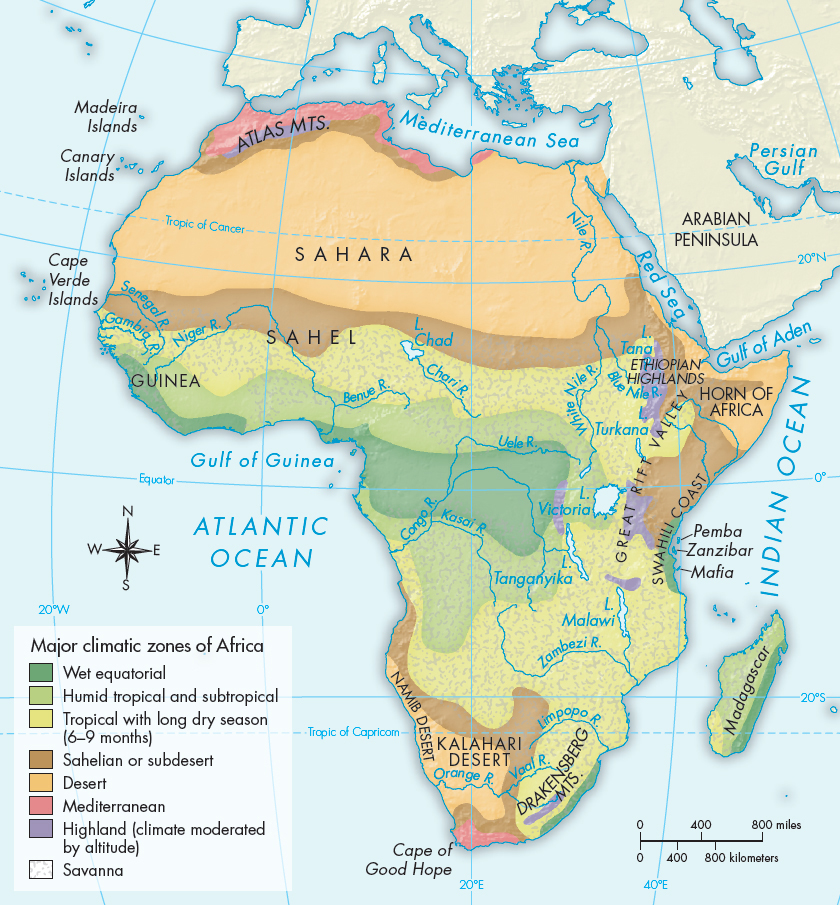Understanding World Societies:
Printed Page 272
Life in the Kingdoms of the Western Sudan, ca. 1000 B.C.E.–800 C.E.
The Sudan is the region bounded by the Sahara to the north, the Gulf of Guinea to the south, the Atlantic Ocean to the west, and the mountains of Ethiopia to the east (see Map 10.1). In the western Sudan savanna a series of dynamic kingdoms emerged in the millennium before European intrusion began in the 1400s and 1500s.

Between 1000 B.C.E. and 200 C.E. the peoples of the western Sudan made the momentous shift from nomadic hunting to settled agriculture. The rich savanna proved ideally suited to cereal production, especially rice, millet, and sorghum. People situated near the Senegal River and Lake Chad supplemented their diet with fish. Food supply affects population, and the region’s inhabitants increased dramatically in number. By 400 C.E. the entire savanna, particularly around Lake Chad, the Niger River bend, and present-
Families and clans affiliated by blood kinship lived together in villages or small city-
Kingship in the Sudan may have emerged from the priesthood. African kings always had religious sanction or support for their authority and were often considered divine. In this respect, early African kingship bears a strong resemblance to Germanic kingship of the same period (discussed in Chapter 14).
Women exercised significant power and autonomy in many African societies. Among the Asante in modern-
Western Sudanese religious practices, like African religions elsewhere, were animistic and polytheistic. Most people believed that a supreme being had created the universe and was the source of all life. Most African religions also recognized ancestral spirits, which might seek God’s blessings for families’ and communities’ prosperity and security as long as these groups behaved appropriately. Some African religions believed as well that nature spirits lived in such things as the sky, forests, rocks, and rivers. These spirits controlled natural forces and had to be appeased. Because special ceremonies were necessary to satisfy the spirits, special priests with the knowledge and power to communicate with them through sacred rituals were needed. Family and village heads were often priests. Each family head was responsible for ceremonies honoring the family’s dead and living members.2 In some West African societies, oracles who spoke for the gods were particularly important.
Kinship patterns and shared religious practices helped to bind together the early western Sudan kingdoms. Islam’s spread across the Sahara by at least the ninth century C.E., however, created a north-
>QUICK REVIEW
How did the Bantu migrations shape early Africa?